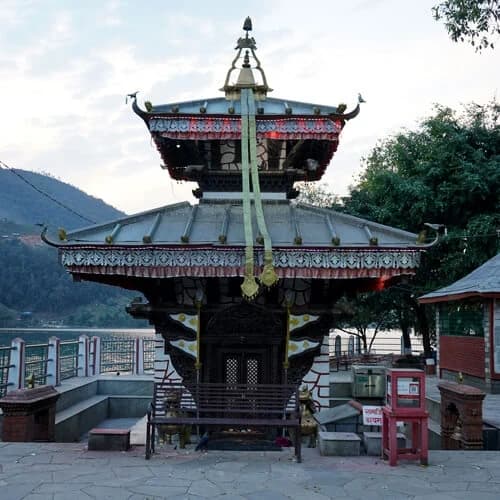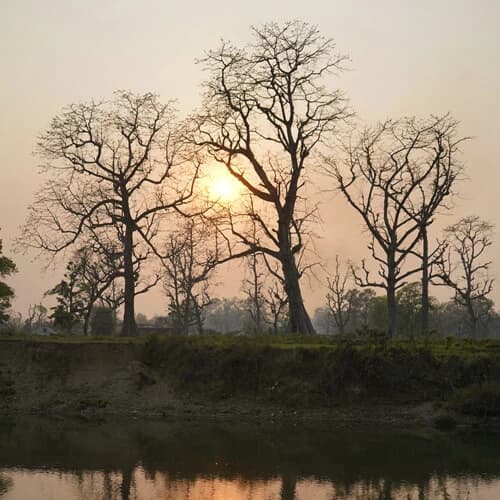What can you expect during this journey?
The Makalu Base Camp Trekking offers an off-the-beaten-path adventure in one of Nepal's most remote regions. Get ready to trek through dense rhododendron forests, high meadows, and rugged mountain trails with stunning views of Mount Makalu, the world's fifth-highest peak. You'll also trek past traditional Sherpa villages, where ancient customs and warm hospitality still exist.
In contrast to the other crowded routes, this trek provides solitude and an intimate feeling of being in contact with nature. It is physically demanding, with long and rewarding walking days. You'll walk over high passes, cross glacial rivers, and stay overnight at traditionally built teahouses. This 19-day trek is suited for trekkers looking for wilderness, adventure, and pristine Himalayan landscapes.
Best seasons for trekking to Makalu Base Camp
The best time for Makalu Base Camp trekking is during spring (March, April, May) and Autumn (September, October, November). These months are characterized by clear skies, favorable weather conditions, and stunning views. Trekking in either of these seasons guarantees maximum visibility and an experience of the Himalayan natural beauty. Additionally, you can choose a well-designed itinerary to enhance the overall travel experience during the trek.
- Spring (March, April, May): During this season, the Makalu region comes to life with colorful rhododendrons and alpine flowers blooming, painting the area in vibrant hues. The climate is ideal for trekking, with temperatures ranging from 10°C to 20°C during the day and clear skies providing stunning views of white peaks like Makalu and Baruntse. The paths are well-conditioned and dry, but trails may be covered in light snow at a higher altitude. The atmosphere is serene and clean, creating an ambiance perfect for trekking and observing the diverse fauna and flora of the region.
- Autumn (September, October, and November): At this time of the year, the weather is characterized by crisp air and transparent skies, which are ideal for trekking. The day temperature ranges from 10°C to 20°C, and the nights can be cold, ranging from -5°C to 5°C. The trek routes are dry and optimal for trekking even at higher altitudes. Moreover, the region comes to life with vibrant rhododendrons and colorful wildflowers.
How difficult is the Makalu Base Camp Trek?
The Makalu Base Camp Trek is graded at a moderate to challenging level. The difficulty is determined by your personal trek experience and fitness level. The off-beat, rugged trails, high elevation, long-distance hiking, and weather conditions can be challenging for anyone, especially unprepared trekkers. It is best suited for trekkers who have good physical fitness and some experience trekking.
- The trek involves steep ascents, uneven and rough terrain, and long days of walking, often 6 hours a day. It will require considerable physical endurance and stamina to be able to cover approximately 8-12 km distance daily.
- Due to the high-altitude terrain, travelers must maintain a gradual pace, with a recommended elevation gain of no more than 500 meters daily, to avoid altitude sickness.
- It is challenging due to unpredictable mountain weather, with sudden temperature drops, snowfall, and storms requiring flexibility and preparedness.
- The trek is demanding because of its remote location and the lack of modern amenities, making it necessary to be self-reliant and well-prepared for extended periods.
- Nonetheless, with proper acclimatization, a well-planned itinerary, and the help of experienced guides and porters, the trek is achievable for even beginners. Contact us if you need any assistance or further suggestions for a trek that suits your needs.
The risk of altitude sickness is high
Altitude sickness is a pathological condition of the human body caused by the decreasing oxygen level in higher-altitude regions. During this trek, travelers will ascend to elevations above 5,000m and are at risk of suffering from the illness. Some of the early signs you might experience include:
- Persistent headache
- Nausea and vomiting
- Dizziness
- Loss of appetite
- Dehydration
- Fatigue
- Sleeplessness
If the symptoms persist, you must take preventive measures to reduce their severity and avoid further complications. We suggest following these major guidelines to alleviate altitude sickness.
- Ascend slowly as it allows your body time to acclimatize properly.
- Drink lots of water to prevent dehydration, which makes symptoms worse.
- Avoid drinking alcohol and smoking, which hamper oxygen intake and result in dehydration.
- Include rest days so that your body can adapt to higher altitudes.
- Re-energize your body by consuming a balanced diet rich in high-carb foods.
- Request your doctor to prescribe preventive drugs like acetazolamide (Diamox) before the trek.
Training to prepare for Makalu Base Camp Trek
The trek is physically demanding, exposing you to high-altitude, rugged trails and unpredictable weather conditions. This will require you to be physically fit and have the stamina to hike multiple days without over-exerting yourself. To prepare yourself adequately for this adventurous journey, we suggest you train at least 3 months prior to the departure date. Some of the basic workout routines you can follow to enhance your body include:
- Develop your cardiovascular health by performing activities such as brisk walking, running, cycling, or swimming at least four to five times a week.
- Stair climbs with a weighted vest to simulate trekking conditions to strengthen your leg and lower body.
- To enhance your core strength and endurance, include squats, step-ups, planks, lunges, etc., in your daily workout.
- Practicing yoga or stretching can improve balance and flexibility and help prevent muscle injuries during the long trek.
- Preparing mentally is essential since the remote and solitary environment can cause anxiety. We suggest you meditate regularly and practice mindfulness to stay motivated and encouraged.
What permits do I need?
Almost all of Nepal's trek require official permits for entry rights, and Makalu Base Camp Trek is no exception. For this remote and adventurous journey, two permits are needed, both with some charges and regulations involved, such as:
Makalu Barun National Park Permit:
- The fee is 3,000 NPR (approximately USD 25) for foreign hikers and 1,500 NPR for SAARC citizens. It is accessible from Kathmandu or the park entrance.
Restricted Area Permit (RAP) for Sankhuwasabha District (Num to Yangle Kharka):
- Its fee is 20 USD per week per individual, which is obtainable only from a registered trekking agency.
Necessary documents
- Passport: It must remain valid for six months from your return date.
- Nepal Visa: You can get it on arrival at Tribhuvan International Airport or pre-book online.
- Makalu Barun National Park Permit: It is required to enter the protected zone.
- Restricted Area Permit (RAP): A trek from Num to Yangle Kharka is required.
- Travel Insurance: It covers high-altitude trekking and emergency evacuation.
- Passport Photos: Necessary for issuing permits (bring 4–6 copies).
Note: It's always a good idea to have hard copies of all the above documents to show at trail checkpoints.
Rules you must follow during the trek
The Makalu Base Camp trek requires original documentation. It falls within a restricted and sensitive area, so trekkers must obtain the required permits. To preserve the fragile environment along the trek, it is essential to stay on the designated trails, respect the local community, and adhere to laws.
- Solo trekking is prohibited, so you must trek with at least another person and an official guide.
- Permits are checked at different points, so carry printed versions of all your documents.
- The use of drones is not allowed and requires additional permission from Nepal's Civil Aviation Authority.
- Respect local traditions, dress modestly, and avoid bothering wildlife and locals.
- Leave no trace, take all your trash home, and don't damage natural habitats.
- Ensure that your travel insurance covers altitude, illness, and evacuation.




